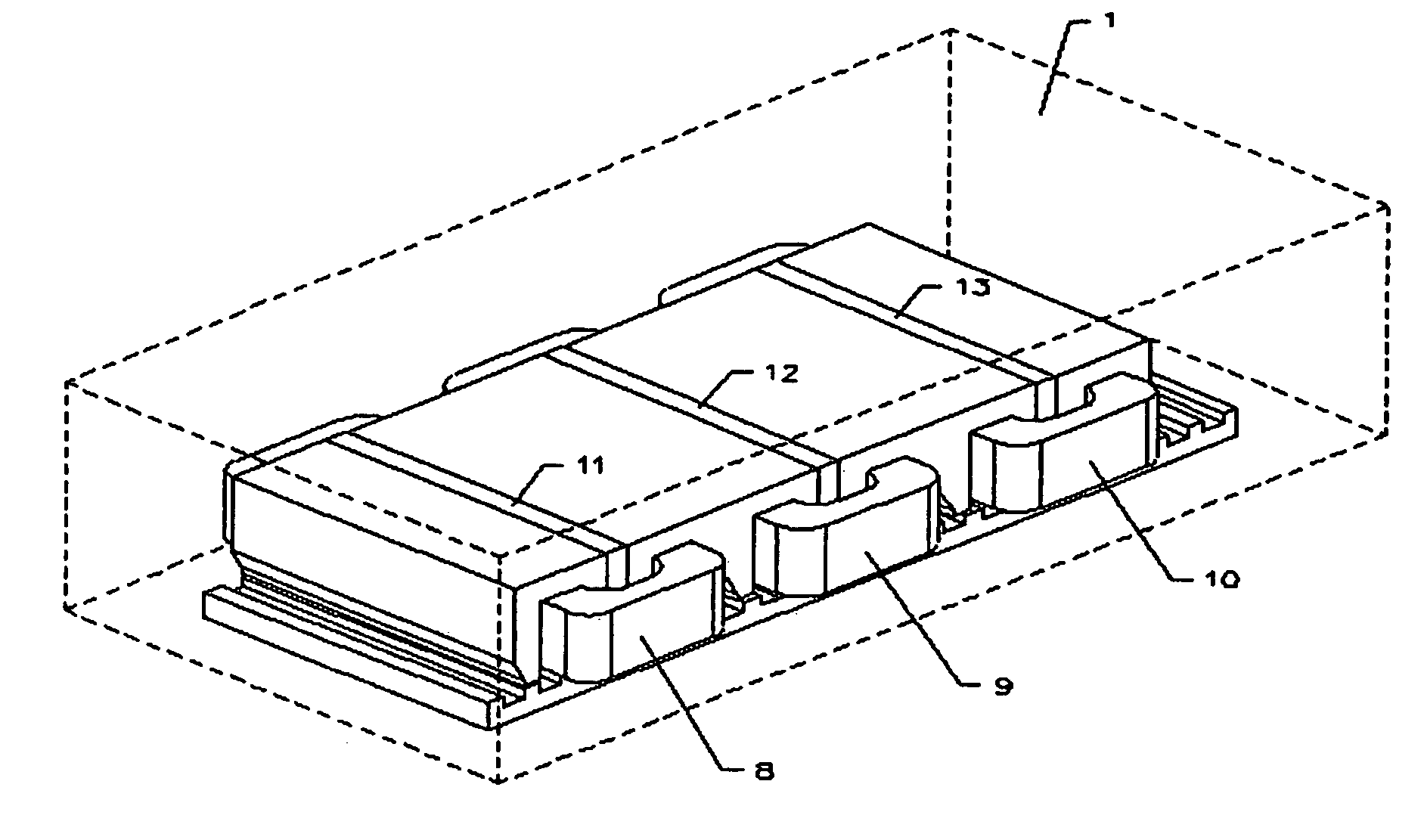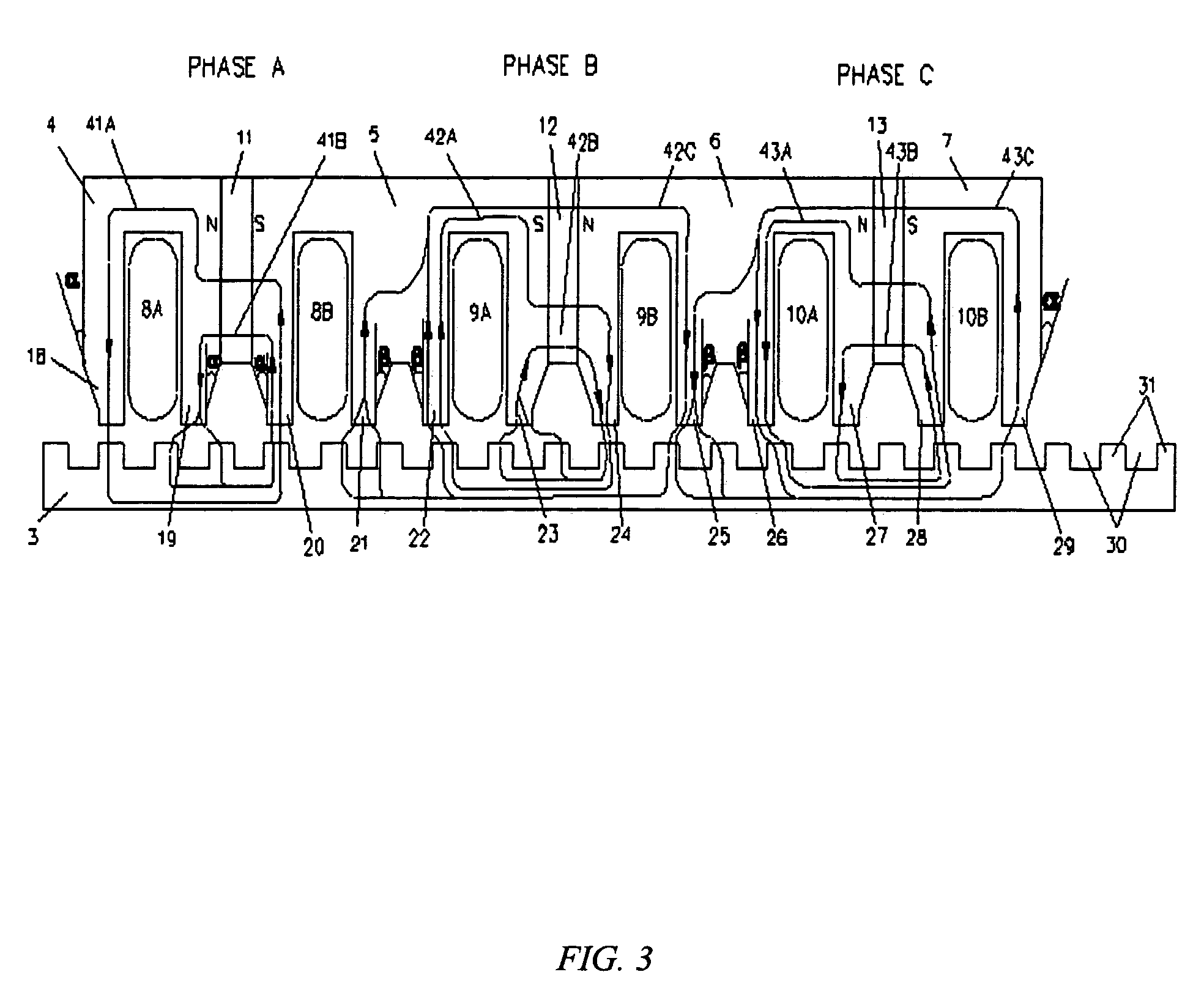Linear hybrid brushless servo motor
a brushless servo motor and hybrid technology, applied in the direction of dynamo-electric machines, electrical apparatus, propulsion systems, etc., can solve the problems of low power conversion ratio, low force density and low power conversion ratio of iron-less design, and substantially limited thrust force, etc., to achieve high power conversion ratio, high force density, and high power density
- Summary
- Abstract
- Description
- Claims
- Application Information
AI Technical Summary
Benefits of technology
Problems solved by technology
Method used
Image
Examples
first embodiment
[0051]The relative pole pitch, T, of the forcer 102 and the platen 103 is substantially identical, and preferably 0.1 mm or greater. The width of the tooth tip of the forcer is preferably in the range of 0.2-0.7*T. The tooth tip width of the forcer 102 and tooth tip width of the platen 103 can be the same or different, but is preferably designed to make the motor system substantially generate the thrust force in the motion direction. Similar to the first embodiment, a method of shifting a stack or a tooth body pair with an optimal electrical angle in each phase assembly also can be used to substantially minimize the existing cogging force and the force ripple generated by the motor system. The electrical angle is preferably in the range of −45° to +45°. The forcer 102 with shifted stack or tooth body pair at some electrical angle causes the central axes of all the alternate tooth tips to be located at a physical distance of (N−θ / 360)*T in each phase assembly. A motor with this confi...
fourth embodiment
[0052]FIG. 16 illustrates a motor with a forcer having a configuration in accordance with the present invention. The forcer 150 comprises six U-shaped stacks 152-157 (preferably ferromagnetic), six permanent magnets 158-163 (preferably rare earth) positioned on the top of the corresponding U-shaped stacks 152-157, respectively, and three ferromagnetic plates 164-166 positioned on the top of corresponding permanent magnets 158-163, respectively. Three phase coils 167-169 are wound in their corresponding stack slots to form three phase assemblies 184-186. Two displacers 191-192 may be positioned between the phase assemblies 184-186 with the appropriate thickness to correct offset electrical angles between phase assemblies 184-186. The central axis of the phase coil 168 of the second phase assembly 185 is offset from the central axis of the phase coil 167 of the first phase assembly 184 by an electrical angle of approximately (T*180°±120°) or by a physical distance of [(N+ / −1 / 3)*T], an...
PUM
 Login to View More
Login to View More Abstract
Description
Claims
Application Information
 Login to View More
Login to View More - R&D
- Intellectual Property
- Life Sciences
- Materials
- Tech Scout
- Unparalleled Data Quality
- Higher Quality Content
- 60% Fewer Hallucinations
Browse by: Latest US Patents, China's latest patents, Technical Efficacy Thesaurus, Application Domain, Technology Topic, Popular Technical Reports.
© 2025 PatSnap. All rights reserved.Legal|Privacy policy|Modern Slavery Act Transparency Statement|Sitemap|About US| Contact US: help@patsnap.com



